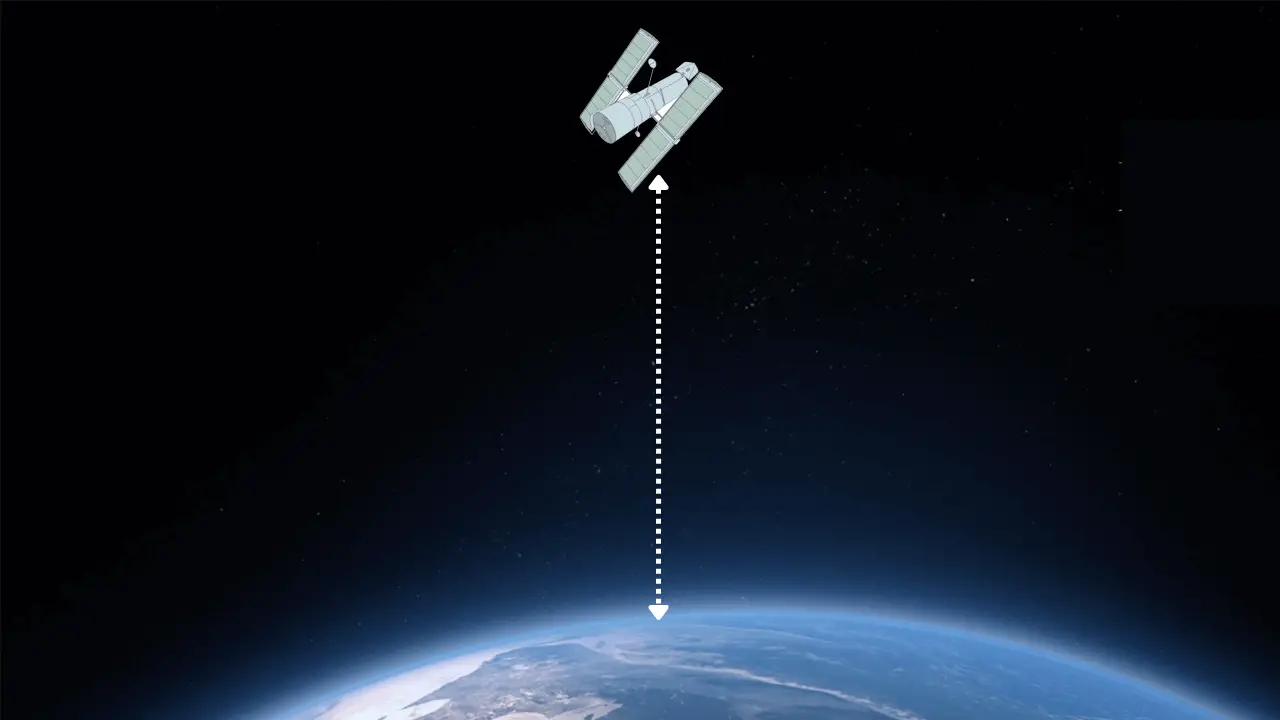The powerful Hubble Space Telescope was launched into low Earth orbit on April 25th,1990 on an STS-31 space rocket at an altitude of about 547 kilometres or 340 miles. It orbits Earth at the speed of 5 miles per second. Out of many Earth-Based telescopes, it was the first largest and most versatile telescope ever launched beyond the Earth’s horizon.
Hubble has changed our scientific knowledge in many ways as it revealed countless secrets of space beyond human imagination. It has taken shots of countless stars, unimaginable galaxies, and distant early planets in the time span of almost 30-31 years now. It has made more than 1.3 million observations to date. Even the detail of galaxies existing 10 to 15 billion light-years away from Earth.
Since the Hubble Space Telescope lies out of the haze of Earth’s atmosphere, therefore, it can clearly see objects without any disturbance, at the angular size of about 0.05 arcseconds.
It completes its one orbit around the Earth in about 1 hour and 35 minutes (95 minutes). The telescope is capable of orbiting 17,000 miles per hour (27,000 kph) and orbits Earth about 15 times a day. It orbits Earth in a circular motion on Newton’s third law of motion which states that “every action has an equal but opposite reaction”.
Surprisingly, we can see HST from Earth in the areas such as; the latitudes of 28.5 degrees north and 28.5 degrees south as its orbit is mainly inclined to the equator of Earth at 28.5 degrees.
A major drawback of the Hubble Space Telescope being in low Earth orbit is that it is mainly solar-powered (has two 25 foot solar panels) which is why it overly gets heated due to direct contact with the Sun. It also absorbs heat coming from Earth and as a result, its infrared detectors start to dazzle. This problem is particularly addressed in James Webb and it has been destined 1 million miles above the Earth in order to keep the telescope cold enough for its infrared detectors to work properly.
🔬 Subscribe to SciMail
Get the latest science discoveries straight to your inbox!
Hubble has infrared light sensitivity issues. It can not image in such areas which are in the direction of the Sun and can only observe 0.8 to 2.5 microns of the infrared spectrum. It is mainly designed to capture visible light, UV radiation, and a small number of infrared wavelengths of light.
Recently, on June 13 NASA informed us that Hubble Space is unexpectedly shut down. Apparently, there is a fault in an ageing memory module of the shuttle and the NASA team is trying hard to fix it, however, the problem is still there and the science is on hold but scientists are quite optimistic about the current situation that Hubble will eventually survive through the procedure as it did through the previous glitches.
How far from the Earth is the Hubble telescope?
Hubble is just 340 miles far from the Earth which is about 547 kilometres. It is relatively closer to Earth than the James Webb Space Telescope which was recently launched and rests at L2 point about 1 million miles or 1.6 kilometres away from Earth.


Leave a Reply